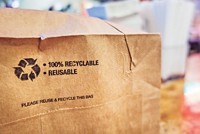Advertisement
Grab your lab coat. Let's get started
Welcome!
Welcome!
Create an account below to get 6 C&EN articles per month, receive newsletters and more - all free.
It seems this is your first time logging in online. Please enter the following information to continue.
As an ACS member you automatically get access to this site. All we need is few more details to create your reading experience.
Not you? Sign in with a different account.
Not you? Sign in with a different account.
ERROR 1
ERROR 1
ERROR 2
ERROR 2
ERROR 2
ERROR 2
ERROR 2
Password and Confirm password must match.
If you have an ACS member number, please enter it here so we can link this account to your membership. (optional)
ERROR 2
ACS values your privacy. By submitting your information, you are gaining access to C&EN and subscribing to our weekly newsletter. We use the information you provide to make your reading experience better, and we will never sell your data to third party members.
Policy
States Continue To Ban Chemicals
New laws target bisphenol A, tris(2-chloroethyl) phosphate
by Cheryl Hogue
October 3, 2011
| A version of this story appeared in
Volume 89, Issue 40
Fueled by consumer concerns about exposure to toxic chemicals, state legislatures in 2011 have continued a trend of recent years by banning specific uses of certain compounds. Thus far this year, lawmakers in six states have adopted laws to restrict bisphenol A or a phosphate-based flame retardant, according to Safer States, a group that tracks chemical legislation in states.
Two states broke new ground on chemical policy this year. New York became the first state to prohibit the use of tris(2-chloroethyl) phosphate in children’s goods. And although four other states adopted measures to stop use of bisphenol A (BPA) in certain products for babies and toddlers, Connecticut became the nation’s first state to ban this chemical from thermal paper used in cash register tapes and other receipts.
In its move, the New York State Legislature zeroed in on tris(2-chloroethyl) phosphate, used as a plasticizer and flame retardant in polyurethane foams and other polymers. The European Union has proposed strict regulation of this substance, citing reproductive toxicity concerns. The European Chemicals Agency says the compound can migrate out of plastics because it does not chemically bind to polymers.
Under the new law, sales of children’s products containing tris(2-chloroethyl) phosphate, including car seats, crib mattresses, and high chairs, will be banned in New York starting on Dec. 1, 2013.
The New York law on tris(2-chloroethyl) phosphate could inspire other states to pass similar prohibitions on this chemical, says Sarah Doll, national director of Safer States, which is a network of environmental and health organizations. “I wouldn’t be surprised if other states pick this up next year,” Doll tells C&EN.
Meanwhile, the Connecticut General Assembly took aim at the use of BPA, an endocrine disrupter, in thermal receipt paper, banning it as of Oct. 1, 2013. BPA can rub off receipts onto skin, where it can be absorbed into the body (C&EN, June 6, page 13). Studies in laboratory animals show BPA can cause developmental and reproductive effects. However, chemical makers say that the substance has been used safely for the past half-century.
The Connecticut law’s effective date has a bit of wiggle room. It specifies that if the U.S. Environmental Protection Agency hasn’t identified “a safe, commercially available alternative” to BPA for use in thermal receipt paper by June 30, 2013, the state’s prohibition won’t kick in until 2015.
In other state action this year, lawmakers in four other states took action against BPA.
Three of those states, Maine, Delaware, and California, moved to prohibit BPA in baby bottles and cups for young children. They join eight other states that have similar bans.
The Maine Legislature banned BPA in baby bottles and other reusable food and beverage containers sold in the state as of 2012. State regulators had announced the ban in December 2010, but under Maine law, the rule had to be approved by the legislature before it could take effect. Gov. Paul R. LePage (R), who was sworn in as the state’s chief executive in January, had dismissed concerns over BPA earlier this year, saying: “The worst case is some women may have little beards” (C&EN, March 21, page 36). But in the end, LePage dropped his opposition and did not veto the ban after the legislature passed it.
In a similar move, the Delaware General Assembly banned sales of baby bottles and cups containing BPA designed for children under four years old. This prohibition takes effect in 2012.
Likewise, the California State Legislature passed a measure that would ban sales of bottles and cups designed for children three years of age and younger that have BPA levels above 0.1 parts per billion. This law would take effect in 2013. The legislation would also require manufacturers of these items to replace BPA with “the least toxic alternative.” Gov. Edmund (Jerry) Brown Jr. (D) had not signed the measure into law as of C&EN’s deadline and had not indicated whether he will assent to the bill.
The Maryland General Assembly, meanwhile, banned sales of infant formula in containers with more than 0.5 ppb BPA. The chemical is used to coat the interior of some food and beverage cans. Two other states have similar laws on BPA in infant formula containers, according to Doll. The Maryland law takes effect in 2012.
Scott Jensen, a spokesman for the chemical industry group American Chemistry Council, downplayed the significance of the new state laws. “While several states did act on legislation this year, the vast majority of states did not,” says Jensen, noting today’s tough economic climate and tight funding for state regulatory agencies.
But Doll predicts that, given consumer demand and the bipartisan support behind this year’s chemical bans, states will continue to pass these sorts of laws in the future.




Join the conversation
Contact the reporter
Submit a Letter to the Editor for publication
Engage with us on Twitter